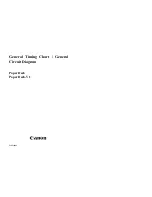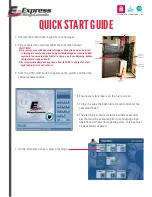
EMR User's Guide
High Density Modular Audio Router (AES, Analog, MADI, TimeCode, Data)
Page 46
Revision 1.8
COMPONENT OVERVIEW
Component
Description
Reference LEDs
These sets of LEDs are green in color and will in 1 second interval
if a valid reference is detected. If no reference is detected they will
cycle between on for 1 second and off for 3 seconds.
Run/Upgrade Jumper
This jumper is used to place the module in upgrade mode when
upgrading the firmware
Dip Switch
This set of switches control the mode of the device. Dip 1 must be
up and 3-4 must be down.
Table
2-14: Description of EMR-OP16-MADI and 3000TDM4-MADI16 Card Edges
Note: For normal operation of the 3000TDM4-MADI16 module, dip switch 1 must be
set to the up position (OPEN) and dip switches 2-4 must be set to the down position.
2.2.7.2. Configuration and Monitoring Menu
EMR-OP16-MADI contains configuration and monitoring menu that allows the user to change some
internal settings of the device and also to monitor various components on the card.
The configuration and monitoring menu can be accessed using either Telnet session or serial connection.
Once gained access to the main menu, use the numbers beside the items to set the value. Follow the on
screen instructions to set the value of the parameter, save and exit the configuration.
Network Configuration
Configuration of Network 1
MADI output Format
Configuration of MADI output to 56 Channels or 64 Channels
Audio Diagnostics
Shows current route map, LSID presence status and data rate
Engineering Menu
Accessed by Evertz technical support staff only
2.2.8. EMR-IP96 (48)-LTC Time Code Input Module
The EMR-IP96 (48)-LTC is a time code input card for the EMR. It supports 96 or 48 balanced LTC inputs.
The EMR-IP96 (48)-LTC input card does not require the use of a 3000ADMX-16X16 for systems with less
than 768 LTC inputs. Each LTC input card connects directly to each LTC output card via one of 8
identical TDM outputs.
The EMR-IP96-LTC rear panel occupies 2 slots in a frame and has 50-pin D-Sub female connectors as
shown in Figure
2-27. The LTC inputs are interfaced by the six 50-pin D-Sub female connectors. Each
connector supports 16 LTC input signals. The pin out for each connector is shown in Table
2-15. The
TDM outputs all use DIN 1.0/2.3 connectors.
















































